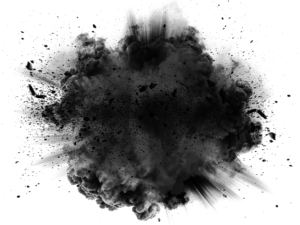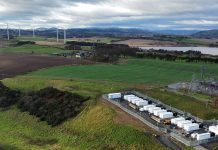 New emissions regulation will prevent thermal back-up generators from participating in demand-side response (DSR).
New emissions regulation will prevent thermal back-up generators from participating in demand-side response (DSR).
Defra laid draft Medium Combustion Plant Directive (MCPD) legislation this week. The legislation will go to Parliamentary Committee next week and will be debated in January.
Back-up means back-up
Guidance issued by the department confirms that back-up generation can run for 50 hours without having to meet strict emissions standards.
However, Defra states unequivocally that back-up generation can only be used as emergency back-up and cannot participate in any kind of balancing service.
The guidance states:
‘Back-up generator’ is defined in the draft regulations as a generator operated for the sole purpose of maintaining power supply at a site during an on-site emergency. This means that back-up generators cannot remain excluded from the regulations if they operate for other purposes, such as the provision of balancing services, even whilst conducting testing.’
Defra clarified in October that generators taking on new balancing services or Capacity Market contracts from 31 October 2017 that remain in force after the end of 2018 will lose transitional arrangement status.
That means generators winning contracts in the forthcoming T-1 and T-4 auctions in January and February must meet the new obligations by December 2018.
Generators that do not enter into new contracts running beyond next year do not have to meet the new requirements until 2025 or 2030, depending whether they are larger or smaller than 5MW (individually or collectively).
Clean up or drop out
The MCPD covers various emissions, but the challenging aspect, particularly for older generators, is the limit of 190mg/Nm3 for NOx (Nitrogen oxides). Even some gas plant will require abatement technology to meet that threshold.
While there is a year for companies bidding into the Capacity Market or entering into new balancing services agreements to clean up plant, for some the cost to do so may outweigh the potential revenues available.
For those generators left standing, the upshot may well be higher revenues from programmes such as short-term operating reserve (STOR), or its equivalent once National Grid completes its balancing services redesign.
The legislation may force some aggregators and suppliers to look much more seriously at ‘load’ DSR (turning equipment on or off) as opposed to generation.
Historically, the lion’s share of DSR has come from generation.
Estimates for the amount of back-up generation in the UK range from 6GW-20GW, though much of it may well be too old or unreliable to provide DSR, even if engineering and operational staff could be persuaded revenues are worth the risk.
While some aggregators may have to rethink their business models as a result of the legislation, the government says it is determined to improve air quality.
The MCPD applies to plant between 1MW-50MW, either individual units, or aggregated smaller plant.
The Environment Agency is set to publish further guidance for plant operators in the New Year.
See the draft legislation here.
The Energyst will publish a range of views on the impact of the MCPD on demand-side response in the forthcoming December/January print issue. Subscribe here.
Related stories:
Free demand-side response report
Follow us at @EnergystMedia. For regular bulletins, sign up for the free newsletter.




This may be a silly question, but is triad management considered a balancing service?
According to the draft legislation, the definition of ‘balancing services’ is ‘any services procured by the transmission system operator in order to balance demand and supply, and to ensure the security and quality of electricity supply, across the national transmission system for Great Britain.’
If a company runs its generator to bring its grid supply down to zero during likely triad periods and thus avoid the charges, does that constitute participating in a service procured by the transmission system operator?
It’s not a silly question. I asked the same thing and was told by a peaking power company (that does Triad export) that Triad is not a balancing service but a billing methodology. So National Grid bases the Transmission charge on those three highest winter peaks (Triad periods) retrospectively. As such, it’s not procuring a service. So as far as I’m aware, back-up generators can still do Triad.
Brendan I’ve asked this question to the EA:
Are Triad operations considered to be part of the balancing market and as such subject to Schedule 25B?
I received back a reply today saying that Yes they are part of the balancing market and subject to Schedule 25B
Thanks Steph. Also asking question and will report back with definitive answer.
I understand that the EA’s intention is that ‘Tranche A’ status will only apply to generators not having new capacity market or grid balancing services. Quite how this will be regulated for a multi-site operator with DSR based agreements is unclear.
The Tranche A diesel fuelled generators can still be used until 2025 without the need for abatement, subject to an air quality assessment and permit.
Have received confirmation via Defra, which says back-up generators cannot do Triad avoidance and remain out of MCPD scope. See this story: https://energystst.wpengine.com/back-diesel-can-no-longer-triad-avoidance-without-cleaning/